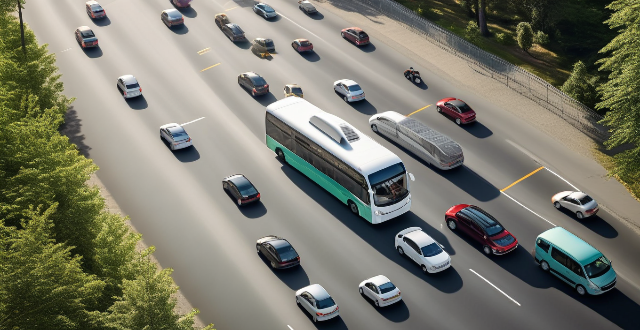Vehicle sharing, or car-sharing, contributes to reducing traffic congestion by decreasing the total number of vehicles on the road, optimizing vehicle usage, encouraging public transit use, promoting sustainable transportation, and reducing the need for parking infrastructure. This innovative approach not only offers convenience but also plays a significant role in alleviating traffic congestion.

How Vehicle Sharing Contributes to Reducing Traffic Congestion
Vehicle sharing, also known as car-sharing, is a concept where individuals can access and use a vehicle on an as-needed basis rather than owning a personal vehicle. This innovative approach not only offers convenience but also plays a significant role in alleviating traffic congestion. Here's how:
Reduction in the Number of Vehicles
The primary way vehicle sharing reduces traffic congestion is by decreasing the total number of vehicles on the road. When people opt for car-sharing services instead of owning personal vehicles, it leads to fewer cars being used overall. Fewer cars mean less demand for parking spaces, reducing the need for extensive parking infrastructure that often contributes to urban congestion.
Optimized Usage of Vehicles
Car-sharing models typically operate on a principle of maximum utilization. Unlike privately owned vehicles that may sit idle for most of the day, shared vehicles are designed to be in constant use. This optimized usage means fewer vehicles are required to serve the same transportation needs, directly reducing traffic volume.
Encouragement of Public Transit Use
Vehicle sharing often complements public transportation systems. Many car-sharing users will combine these services with public transit for their daily commutes, using shared vehicles for the first/last mile of their journey. This combination can reduce the reliance on personal vehicles during peak hours, leading to less traffic at those critical times.
Promotion of Sustainable Transportation
By making car-sharing an attractive option, more people might choose to cycle, walk, or use other forms of sustainable transportation for short trips. This shift can significantly reduce the number of cars on the road, especially for routine activities like shopping or visiting local amenities.
Reduced Need for Parking Infrastructure
Fewer shared vehicles mean a reduced need for large parking facilities. These structures not only take up valuable urban space but also create bottlenecks as drivers navigate in and out of them, contributing to congestion. With vehicle sharing, the need for such infrastructure diminishes, leading to less congested streets.
In conclusion, vehicle sharing presents a multifaceted solution to the challenge of traffic congestion. By reducing the number of vehicles on the road, optimizing vehicle usage, encouraging public transit use, promoting sustainable transportation, and reducing the need for parking infrastructure, car-sharing initiatives play a crucial role in making our cities' transport systems more efficient and less congested.